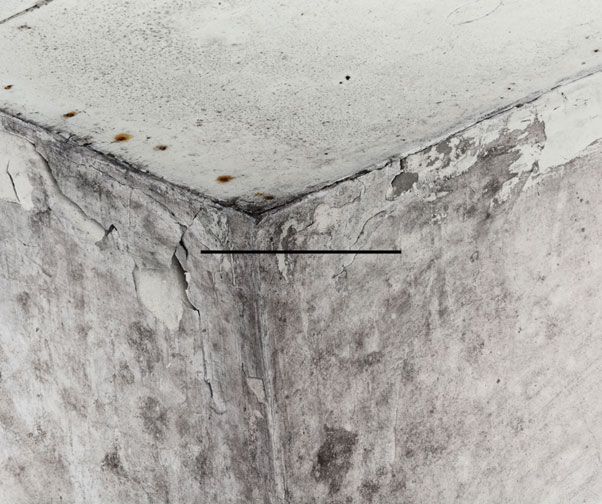One of the most annoying things that any property owner has to deal with is mold.
Unfortunately, mold spores are everywhere, and they love moisture, so when they land on a wet surface, they can start to grow and spread.
Water damage almost always results in mold damage, and New York is regularly subject to severe storms.
If you’re subject to water damage in your property, it’s essential to treat it as soon as possible to prevent any spores from multiplying.
Read on to learn how to prevent mold after water damage.
Why Is Mold Dangerous In My Home?
Mold is potentially dangerous to both your property and health. It can compromise a building’s structural integrity while leaving a musty odor in each room. While this might not seem like a significant problem, it will decrease the value of your property.
The spores also produce allergens and irritants and can sometimes become toxic. Allergic reactions usually happen when you’re in close contact with mold spores, including breathing them in.
The common symptoms of an allergic reaction to mold include sneezing, runny nose, red eyes, coughing, and skin rashes. Mold can also aggravate conditions such as asthma and respiratory problems.
How Can I Prevent Mold After Water Damage?
So, now you know why mold is a problem and how common it is, it’s time to look at the best ways to prevent it in a water-damaged property.
Remove Moisture From The Air
The most crucial step in preventing mold is to dry the wet areas of your property as soon as possible. The faster you can remove the moisture, the better chance of stopping any spores from multiplying.
It would be best to use a combination of fans, air conditioners, and dehumidifiers to remove the moisture from the air. If possible, open some windows to improve airflow and speed up the drying process.
If there are any carpets or rugs in the water-damaged area, they will need to be removed and dried separately. You might be able to save them if you act quickly enough, but otherwise, they will need to be replaced.
In cases of severe damage, it’s best to use a water damage remediation company, as they have access to high-powered equipment.
Remove Any Standing Water
Once you’ve removed all the moisture from the air, it’s time to start removing any standing water.
Depending on the extent of the damage, this could be anything from mopping up a small puddle to using a sump pump to remove several feet of water.
If the water is contaminated, such as floodwater, you’ll need to take extra care when removing it. Make sure you’re wearing gloves, eye protection, and old clothes that you can throw away afterward.
Once all the water has been removed, you’ll need to dry the area completely before moving on to the next step.
Be Aware Of Odors
Mold has a distinct odor that’s compared to musty or damp. If you start to notice any unusual smells within your property, it’s a sign that spores might be present.
The best way to combat mold odors is to remove the source of the problem. Once all the mold has been removed and the area is dry, you can use an air freshener or scented candle to mask any lingering odors.
Replace Damaged Materials
Mold doesn’t just grow on surfaces; it can also grow in porous materials, such as insulation, drywall, and carpet padding. If any of these materials are damaged by water, they will need to be removed and replaced.
It’s also good to remove any mold-affected items, such as clothing, books, or furniture. These items can often be cleaned and saved if you act quickly enough, but otherwise, they will need to be replaced.
Get Straight In Touch With Your Insurance Company
Last but not least, you’ll need to contact your insurance company and start the claims process. Most policies will cover mold damage, but it’s always best to check with your provider to be sure.
Once you’ve filed a claim, an adjuster will come out to assess the damage and estimate how much it will cost to repair. You can make sure you get the right amount by using a public adjuster service to liaise with your insurance provider.
Preparing Your Home For Water Damage
Now that you know how to prevent mold after water damage, it’s time to start preparing your home. These tips will help you protect your property in the event of a flood, leak, or any other type of water damage.
Know Where To Access Your Water Supply
One of the worst things is to suffer a leak or broken pipe and not know how to stop it from becoming worse.
The best way to avoid this happening is to be sure you know where your stopcock is located so you can turn off the water supply if necessary.
Protect Your Property
It’s also a good idea to keep some sandbags on hand in case of flooding because they’ll absorb the water.
Waterproof sealant can also be great for your basement and other water damage-prone rooms because it creates a barrier against the water.
While both of these ideas will have some benefits, water damage can occur due to severe storms, so you might not be able to stop it completely.
Conclusion
It’s no secret that mold can be a serious problem, and it often leads to more significant issues down the line if you don’t treat it appropriately.
By protecting your property, you can reduce the impact of water damage, but you will need to use a specialist remediation service in most cases.
It’s also important to remember that many insurance providers will try to reduce your compensation amount, which is very common. At Lexington Public Adjusters, we work on your behalf to ensure you receive the correct insurance payment.
We’re highly experienced in dealing with complex cases and will always do everything we can to help you navigate the complex world of insurance claims.

